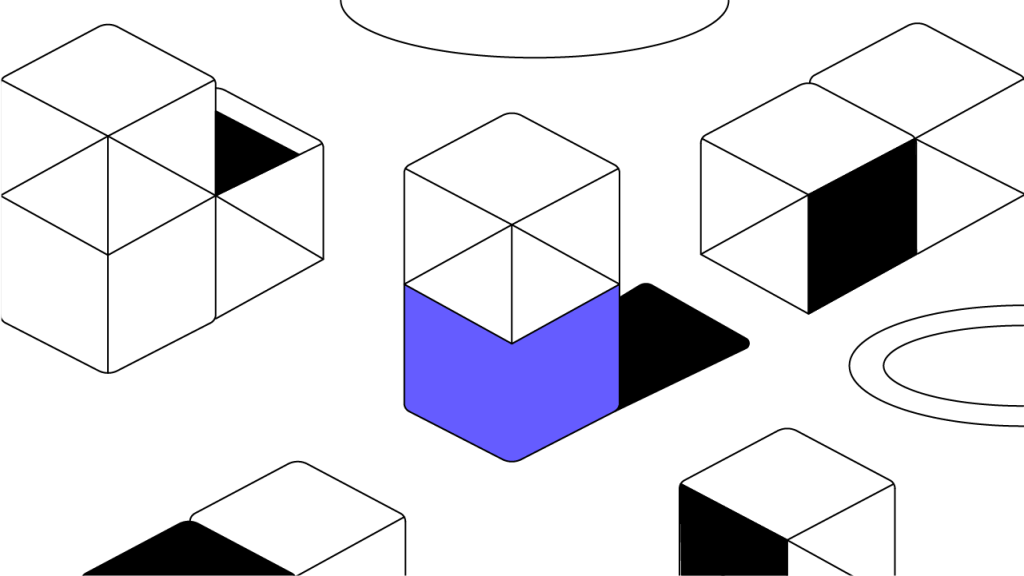Contents
Fantom: A Fast and Flexible Next-Generation Blockchain
Fantom is a smart contract-enabled blockchain that provides a robust environment for dApp development.
By Michael Kong, CEO, Fantom
Updated March 20, 2025 • 5 min read

Summary
Fantom’s fast, scalable platform for decentralized applications (dApps) draws its speed from a unique consensus mechanism called Lachesis. Fantom also offers tools that make it easy to integrate existing dApps, a nuanced system of staking rewards, and a suite of built-in decentralized finance (DeFi) tools.
What Is Fantom?
Fantom is a decentralized, permissionless, open-source smart contract platform for decentralized applications (dApps) and digital assets — one of many blockchain networks built to provide an alternative to Ethereum. The Fantom blockchain mainnet went live in December 2019 and its network architecture intends to provide a viable solution to the Blockchain Trilemma by providing a steady balance of scalability, security, and decentralization.
Like other Ethereum alternatives, Fantom intends to provide more scalability and lower costs than the legacy first-mover smart contract platform is able to provide in its Ethereum 1.0 iteration. A unique element of the Fantom crypto platform is that users can create and deploy their own independent networks instead of relying solely on Fantom’s main consensus layer. Each application built on Fantom operates on its own unique blockchain. While operating on its own blockchain, each Fantom dApp also enjoys the security, speed, and finality of the parent Fantom blockchain. Further, independent blockchains are modular in structure, which allows developers to configure them to their particular project’s use case.
Unlock the future of money on Gemini
Start your crypto journey in minutes on the trusted crypto-native finance platform
Fantom network is best conceptualized as a parent network composed of individual child networks that host dApps of all shapes and sizes. Fantom’s infrastructure is tied together through its Asynchronous Byzantine Fault Tolerant (aBFT) Proof-of-Stake (PoS) consensus mechanism, which maintains the operational efficiency of the entire network. The aBFT network structure is designed to preserve network security while maximizing speed.
Fantom Network Structure
Fantom operates atop a bespoke “leaderless” PoS consensus mechanism dubbed Lachesis that secures the Fantom network and ensures both transactional speed and security. Lachesis is an aBFT consensus mechanism, which means that network data can be processed at different times, and the network can tolerate as much as one-third of participants engaging in faulty or malicious behavior without causing undue harm to network processes.
Lachesis also boasts near-instant finality. This means that transactions are confirmed and finalized within only a few seconds, without the need to wait for laborious block confirmation as experienced in Proof-of-Work (PoW) networks. By avoiding the relatively lengthy block confirmation process, this aBFT system is much faster and more scalable than many of its Byzantine Fault Tolerant (BFT) counterparts.
Diving deeper into how Fantom’s Lachesis functions, we see how each network node contains its own Directed Acyclic Graph (DAG), which records the chronology of “event blocks'' and respective transactions, with each node achieving internal consensus independently. Confirmed batches of event blocks are then compiled into finalized blocks that are confirmed on the wider Fantom network. Finalized blocks, which form the base layer Fantom blockchain, are composed of confirmed event blocks from the independent nodes.
While independent Fantom nodes will occasionally communicate with one another about transactions and events, they do not confirm finalized blocks or the overall state of the network. This architecture results in a system that processes transactions quickly, and achieves finality within seconds. Fantom stresses that its PoS mechanism is leaderless, which means there are no block leaders and no participants have a special role in its operation. Anyone can join or leave the node network at any point, and all nodes hold equal weight in the consensus protocol.
Fantom Blockchain Mainnet: Opera
The Lachesis consensus apparatus servers power Fantom’s mainnet deployment platform — Opera — which hosts dApps operating on the network. Opera is a permissionless and open-source environment for development. It boasts the full range of smart contract capability that Ethereum has due to its support of the Solidity programming language and integration with the Ethereum Virtual Machine (EVM). Applications built on Fantom can be designed to be interoperable with platforms built on Ethereum, while still maintaining the transactional efficiency of the Fantom network.
A proprietary software development kit (SDK) known as the Fantom Virtual Machine will eventually be released for native Fantom-based development alongside continued support for the EVM — a strategy meant to entice Ethereum-based dApp developers to make an easy transition to building applications on Fantom.
To provide scalability to the whole ecosystem and avoid network congestion, applications built on Fantom effectively use their own independent blockchains. Because each dApp gets its own blockchain, each can be configured to meet its particular needs. Tokenization, tokenomics, and governance are all modular pieces to the puzzle that can be customized by each dApp as needed without affecting the underlying structure of Fantom’s Lachesis consensus layer.
However, each independent dApp blockchain remains plugged into the Lachesis PoS consensus protocol, and thus benefits from its underlying speed and security. With Lachesis as the common thread tying these independent blockchains together, all Fantom dApps benefit from an inherent interoperability, and can easily communicate with one another. With these features in mind, Fantom is working to make a case for why dApp developers should make the switch from Ethereum to Fantom.
Fantom Staking, FTM Token, and DeFi Suite
Fantom’s native utility token — FTM — powers the entire Fantom blockchain ecosystem. FTM tokens are used for staking, governance, payments, and fees on the network. There is a total supply of 3.175 billion FTM coins, with 2.5 billion in circulation as of March 2021. The remainder will be distributed as Fantom staking rewards. FTM is available as a native mainnet coin, an ERC-20 token in the Ethereum ecosystem, and a BEP-2 token in the Binance ecosystem.
Anyone can participate in Fantom staking with a minimum stake of 1 FTM by moving their FTM to a Fantom wallet address. When doing so, ERC-20 FTM tokens and BEP-2 FTM tokens will automatically be swapped for Opera FTM coins. Also, to operate a validator node on Fantom’s permissionless network at least 3,125,000 FTM must be staked (valued at more than $1 million USD as of March 2021).
Fantom provides a fairly dynamic and lucrative staking structure for users. Users can stake their FTM at-will with a validator node for a 4% annual percentage yield (APY) staking reward, which is a common staking model. However, users can also take advantage of Fantom’s Fluid Rewards by choosing to lock up FTM for a predetermined time — ranging from two weeks to a year — to secure higher reward rates of as much as 12% APY.
Fantom also employs a feature called Liquid Staking, whereby stakers can mint sFTM at a 1:1 ratio to their staked FTM to be used as collateral in Fantom Finance — a suite of DeFi apps provided by Fantom — thus allowing users to get more use out of their staked FTM. Some of the DeFi offerings that Fantom provides include:
fUSD: a Fantom-based stablecoin that’s pegged to the U.S. dollar
fSwap: a synthetic asset decentralized trading platform
fLend: a liquidity pool from which users can lend or borrow
Fantom’s approach to the DeFi and dApp landscape is innovative — as is the structure of its staking reward program. Further proposed use cases for Fantom’s highly scalable smart contract platform are dApps related to supply chain management, payments, and smart city programs, although its permissionless nature means its actual use cases will likely far exceed these prescribed categories.
With its first-of-kind complex and unique infrastructure, Fantom’s approach to fast, scalable dApp development is still establishing its place in the wider blockchain ecosystem. As of February 2022, the Fantom blockchain has a total value locked (TVL) of over $10 billion and 150 independent blockchains operating on its network. Although there is already significant competition in the blockchain sector, the speed and interoperability benefits that Fantom offers developers are notable and the platform is poised to gain further traction.
Cryptopedia does not guarantee the reliability of the Site content and shall not be held liable for any errors, omissions, or inaccuracies. The opinions and views expressed in any Cryptopedia article are solely those of the author(s) and do not reflect the opinions of Gemini or its management. The information provided on the Site is for informational purposes only, and it does not constitute an endorsement of any of the products and services discussed or investment, financial, or trading advice. A qualified professional should be consulted prior to making financial decisions. Please visit our Cryptopedia Site Policy to learn more.

Author
Michael Kong
CEO, Fantom
Michael Kong is the CEO of Fantom. Previously, he worked as CTO at several startups and started a cryptocurrency fund that assisted Fantom with a capital raise in early 2018. Michael studied Information Technology and Finance at the University of Sydney where he built one of the first Ethereum decompilers and smart contract vulnerability detectors.
Is this article helpful?


